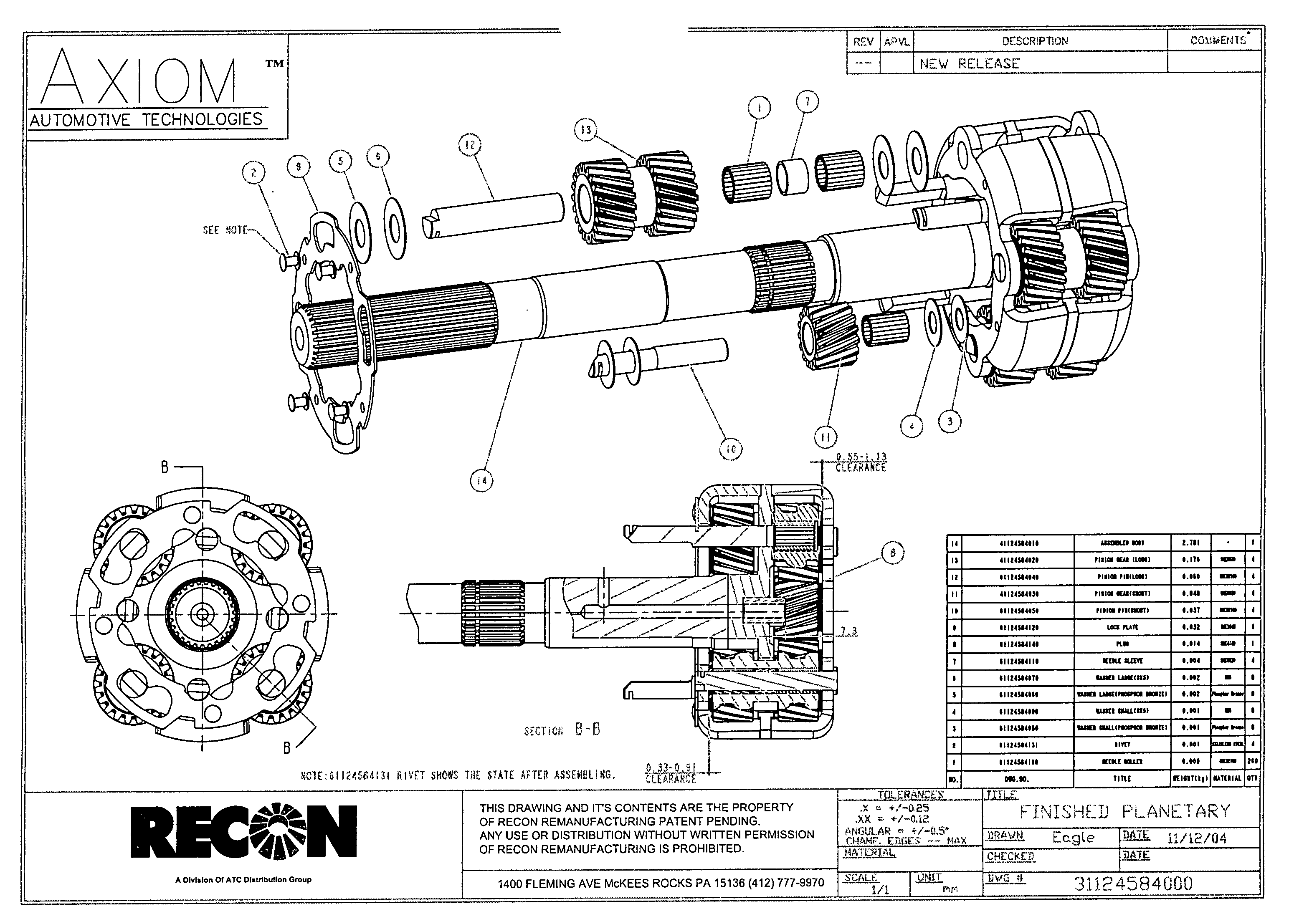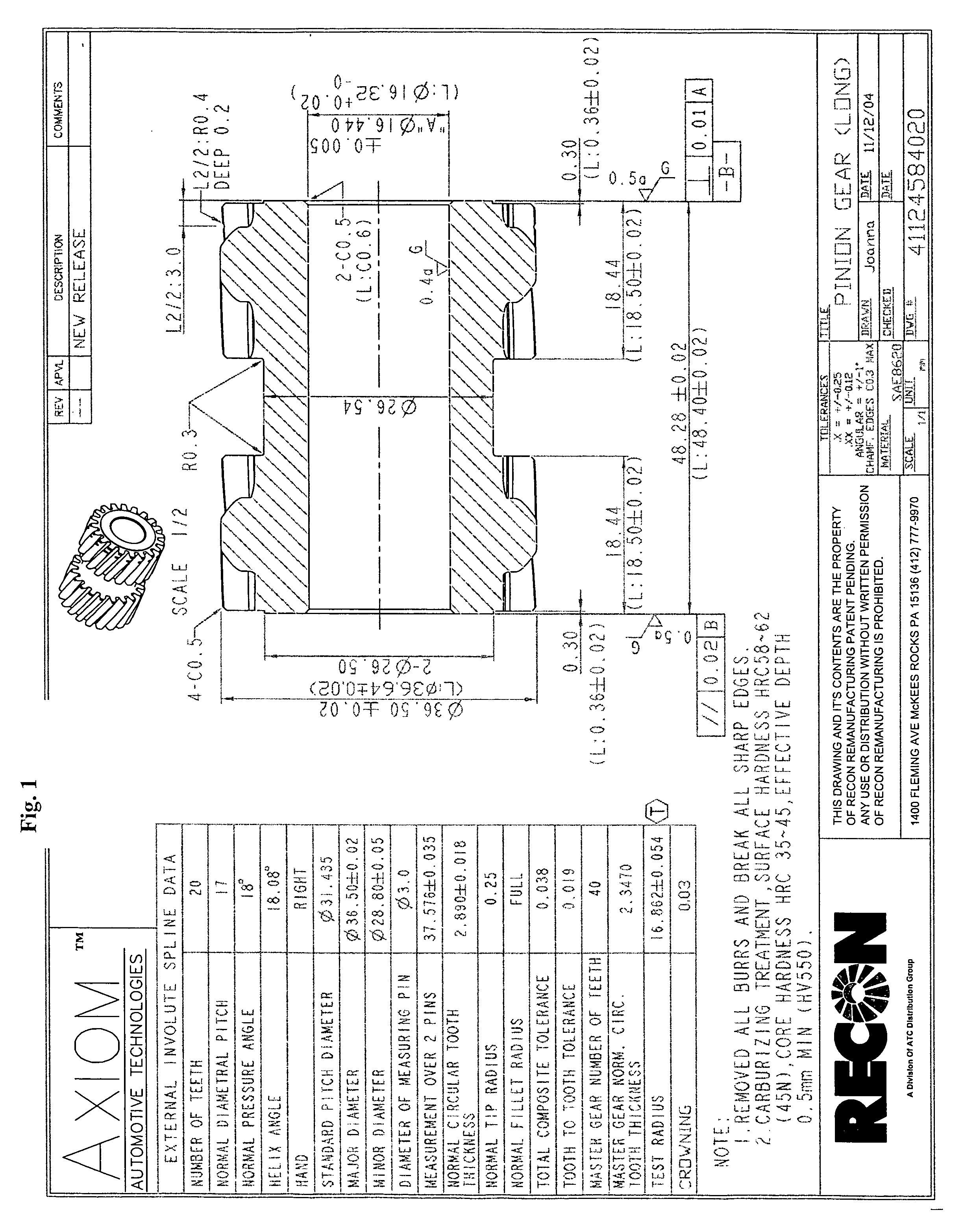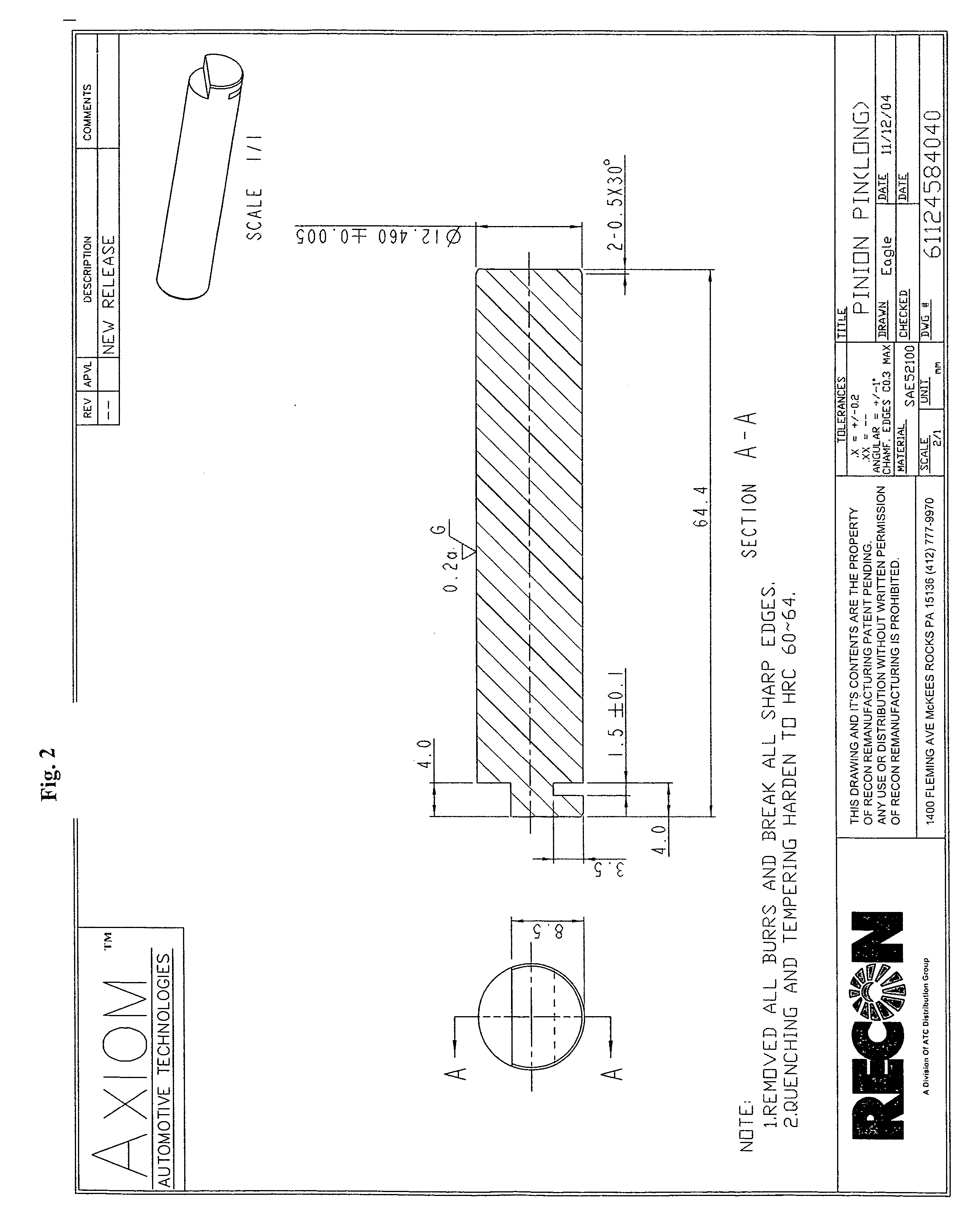Automatic transmission and gear train
- Summary
- Abstract
- Description
- Claims
- Application Information
AI Technical Summary
Benefits of technology
Problems solved by technology
Method used
Image
Examples
example 1
[0136] The disclosed planetary gear train is compound in nature. The transmission is composed of eight pinion gears, four of which are compound, and four that are plain, all eight gears are assembled into one carrier utilizing a forward and a rear sun gear, a ring gear, a band drum and a one way roller clutch. The four plain pinion gears mesh with the four compound gears and the forward sun gear and one way roller clutch. The four compound pinion gears also mesh with the four plain pinion gears, the front sun gear, the ring gear and the rear sun gear. A 2.8 reduction is achieved by applying the rear band and driving the planetary assembly by the front sun gear through the one way roller clutch. (First gear) A 1.8 reduction is achieved by applying the intermediate clutch, thus driving the planetary by the ring gear and over running the one way roller clutch. (Second gear) Third gear is achieved (one to one) by applying the direct clutch, and releasing the rear band maintaining the ap...
example 2
[0154] The 180C automatic transmission was tested and compared to an automatic transmission in accordance with instant invention, the 280PS™ transmission. The testing protocol was designed to reproduce 180C field failures, create a worn or failed gear train, provide indicators of wear / failure, provide fluid sample, analyze pressure, temperature, noise, and vibration. The test protocol accelerated years of field wear into the test period
[0155] A computer algorithm was designed to automate the test. The program ran 11 cycles / hour, each consisting of four shifts in first and second gear. This produced high torque and RPM and created high fluid temperatures
[0156] Each cycle was as follows:
[0157] Start in 1st Gear
[0158] Ramp input speed from 850 RPM to 3500 RPM
[0159] Add output torque of 375 lb-ft, hold for 40 seconds
[0160] Remove load, but maintain input speed of 3500 RPM
[0161] Shift to 2nd Gear
[0162] Use vacuum to induce 1-2 shift
[0163] Apply 375 lb-ft torque, hold for 50 seco...
PUM
 Login to View More
Login to View More Abstract
Description
Claims
Application Information
 Login to View More
Login to View More - R&D
- Intellectual Property
- Life Sciences
- Materials
- Tech Scout
- Unparalleled Data Quality
- Higher Quality Content
- 60% Fewer Hallucinations
Browse by: Latest US Patents, China's latest patents, Technical Efficacy Thesaurus, Application Domain, Technology Topic, Popular Technical Reports.
© 2025 PatSnap. All rights reserved.Legal|Privacy policy|Modern Slavery Act Transparency Statement|Sitemap|About US| Contact US: help@patsnap.com



